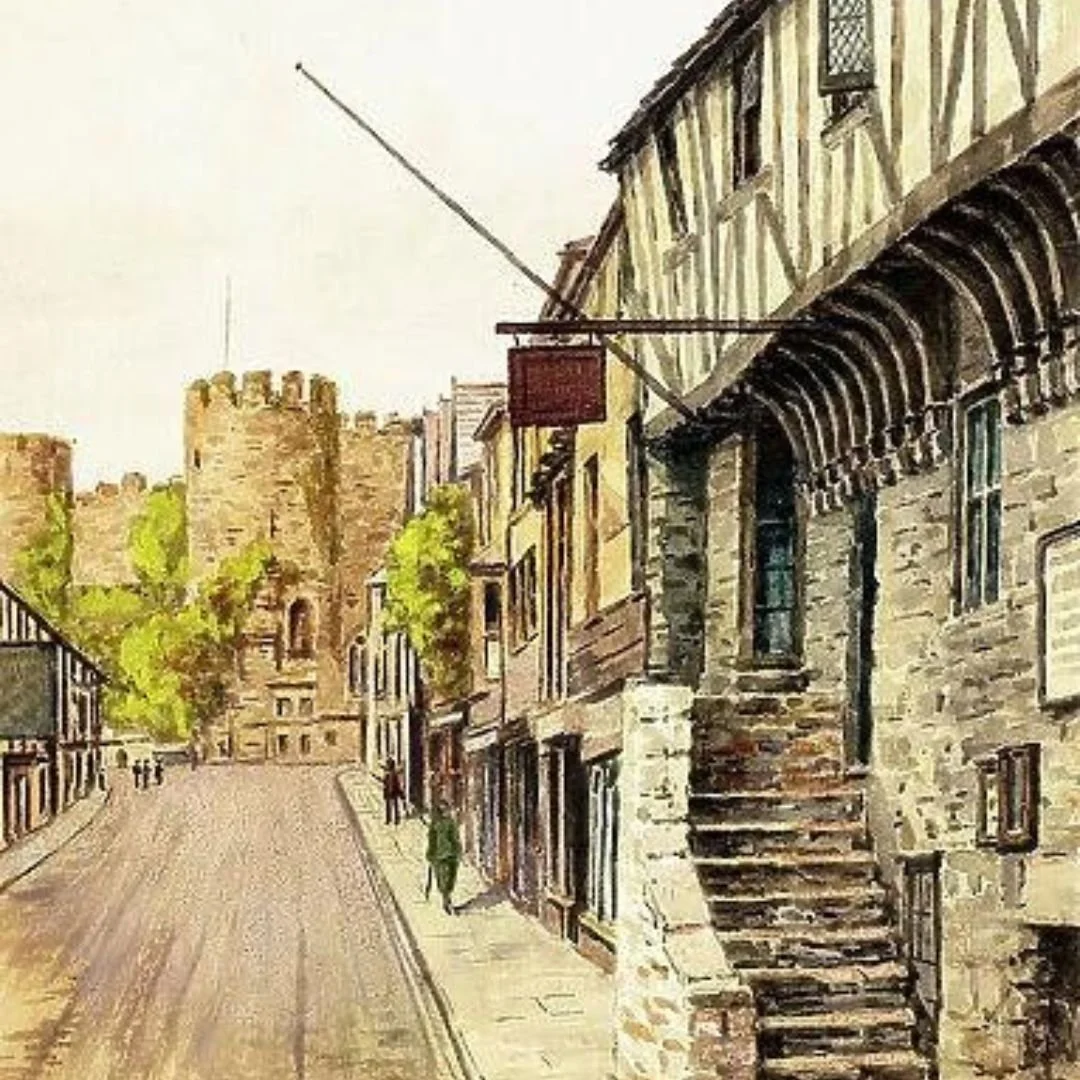Aberconwy House In Conwy, Wales: 14th Century Merchant's House
Aberconwy House in Wales is a 14th-century merchant's house.
Aberconwy House is the oldest secular domestic building in Wales, with timbers dating back to 1417.
Originally a Medieval trader's house or warehouse, it has a rich history of commerce.
In the 1600s, Evan David sold produce from his Benarth farm there, and in the 1800s, Captain Samuel Williams sold goods such as slate, copper, and lead.
In medieval times, a trader's house was not just a place of residence but a centre of commerce and social interaction.
Typically located near bustling marketplaces or along main trade routes, these houses varied in size and construction depending on the trader's wealth and status.
They often featured a combination of living quarters and workspace, with some directly incorporating a shopfront or stall where goods could be displayed and sold.
Living spaces included rooms for family members, kitchens, and possibly areas for servants or apprentices. Storage rooms were essential for keeping goods secure and organised, awaiting sale or trade.
Aberconwy House features two upper stories above a cellar - the top floor is jettied, with its overhanging structure supported by corbel stones, a sign of prosperity.
Following the conquest of Wales by Edward I in the late 13th century, Conwy, with its castle and walls, became a significant strategic and commercial hub.
The town received a Royal charter in 1284, and English settlers, particularly from Cheshire and Lancashire, were encouraged to populate the new borough.
Aberconwy House is one of the few surviving examples of the houses-cum-warehouses built by English merchants trading on the Welsh Marches during the medieval period.
Tree-ring analysis of the roof timbers indicates that the trees were felled around 1417–1420, making it one of the oldest dateable houses in Wales.
Allegedly, the oldest dateable house in Wales is Hafodygarreg, core samples taken from the surviving cruck-truss provided a felling date of Summer 1402.
Painted by Alfred Robert Quinton in 1920
Its historical importance was recognised in 1950 when it was designated a Grade I listed building.
By the early 20th century, Aberconwy House had become a Temperance Hotel run by Jane and William Jones, providing a safe and quiet alternative to Conwy's rowdier pubs and inns.
After operating as an antique shop for several years, the building fell into disrepair.
To prevent it from being dismantled and shipped to the USA, Alexander Campbell-Blair from Llandudno purchased it and bequeathed it to the National Trust in 1934.
Today, the historic structure is still maintained by the National Trust and open to the public.
On the ground floor, there is a kitchen, while upstairs contains a series of rooms, each decorated in different styles to represent various periods in the house's history.
Some rooms are adorned in Georgian style, a Victorian bedchamber is included, and the loft features Jacobean decor.
The house is filled with period furniture. One particularly striking item is a drinking cup made of horn, transparent enough to see through.
The ambience is captivating, with creaking floorboards, dark timbers creating a medieval atmosphere, and authentic furnishings that evoke Conwy's history.
Knowledgeable guides are present throughout the house, offering insights into its history.
Someone who recently visited, said: “Great 600 years+ of history in this small building, brought to life by a very friendly, helpful and knowledgeable guide called Holly.
”It doesn't take long to walk around the 2 floors above the shop, approx 40 mins. There are obviously 2 flights of stairs to negotiate if you have any disabilities.”
”Holly also recommended a local cafe called The Old Bookshop which was really lovely.”
If you’d like to visit, the address is: Castle Street, Conwy, Conwy, Wales, LL32 8AY.
The historic market town of Conwy
The town is most famous for Conwy Castle, a UNESCO World Heritage Site, built by Edward I between 1283 and 1289 as part of his conquest of Wales.
The castle, with its impressive walls and towers, is considered one of the finest examples of military architecture from the medieval period.
Surrounded by a nearly complete set of town walls, Conwy offers a glimpse into medieval urban life.
The walls stretch for almost a mile and include 21 towers and three original gateways - visitors can walk along the walls for a panoramic view of the town and the surrounding countryside.
Conwy's historic town centre features a variety of well-preserved buildings, including the smallest house in Great Britain, a tiny red cottage measuring just 10 feet by 6 feet.
The town also boasts Plas Mawr, an Elizabethan townhouse that showcases the wealth and style of its period.
The town's market heritage is still alive today, with a weekly market held on the high street.
Conwy is also a gateway to the natural beauty of Snowdonia National Park and the scenic Conwy Valley.
Its picturesque harbour, filled with fishing boats and offering views of the estuary, adds to the town's charm and appeal.
If you enjoyed this blog post, please follow Exploring GB on Facebook for daily travel content and inspiration.
Don’t forget to check out our latest blog posts below!
Thank you for visiting Exploring GB.




















